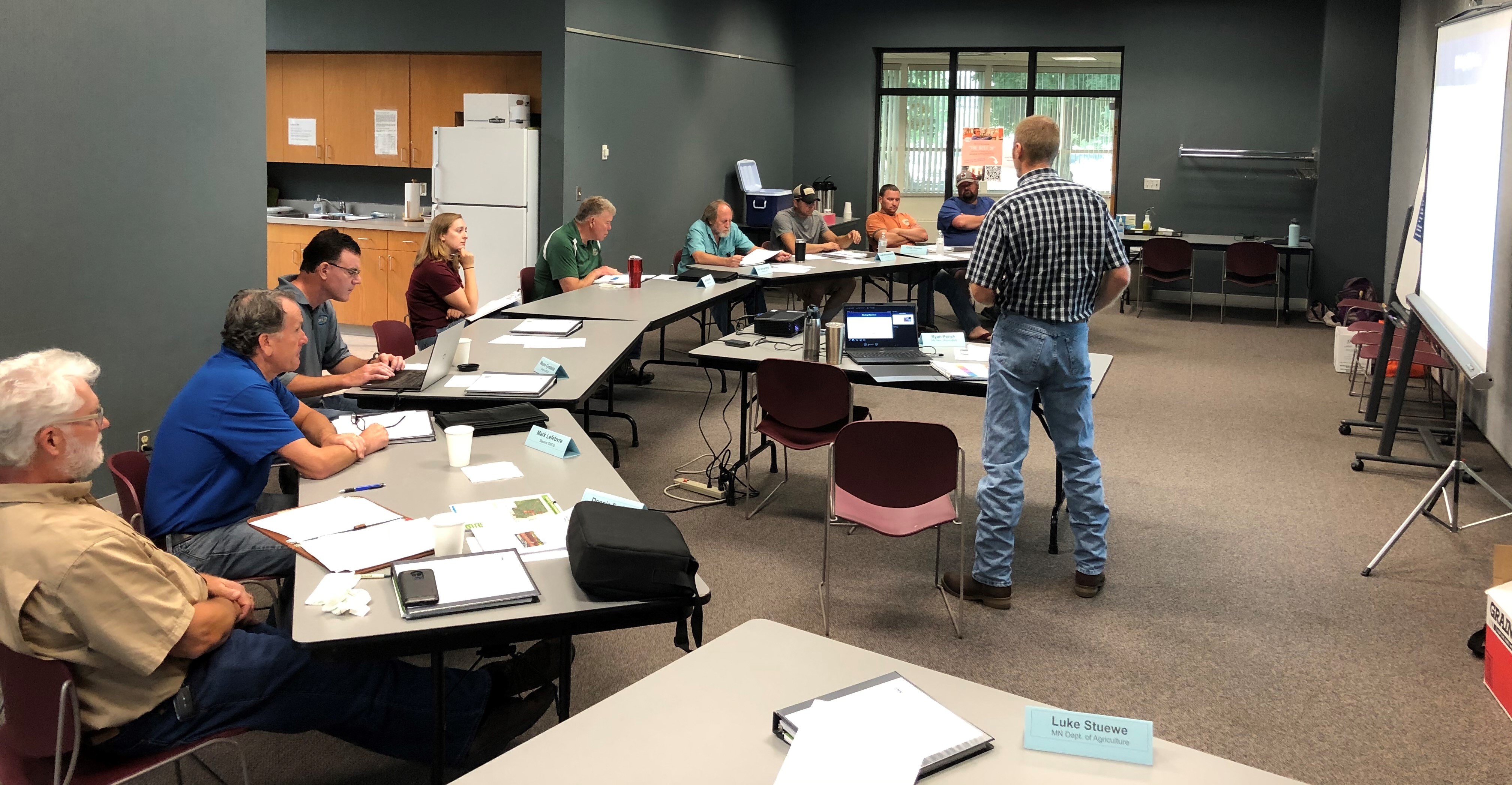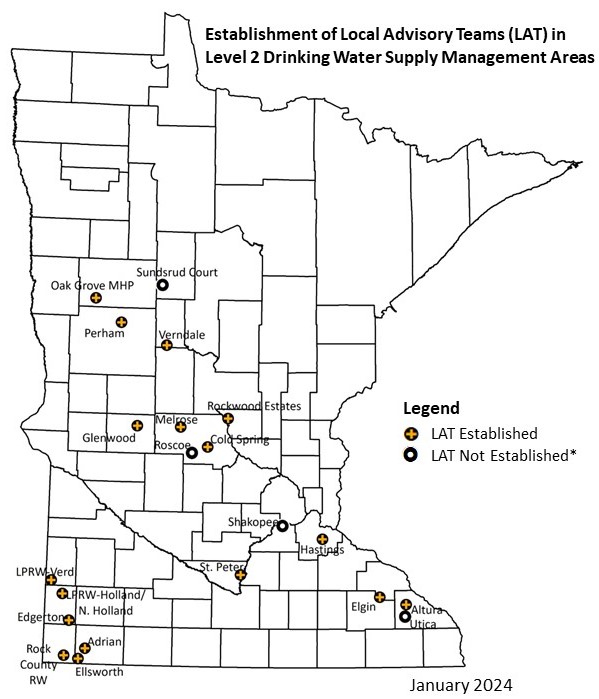The MDA’s goal under part 2 of the Groundwater Protection Rule is to involve the agricultural community in problem solving at the local level to address localized concerns about unsafe levels of nitrate in groundwater.

Local farmers and their crop advisers/consultants are critical in helping develop and implement appropriate activities to address elevated nitrate in their groundwater because they control the land use. The MDA’s local advisory team process is constructed to involve the agricultural community in problem solving with the opportunity to avoid regulation if voluntary actions are taken.
Local Advisory Teams
The Local Advisory Teams (LATs) consist of people who are from the area, including farmers, agronomists, local government staff, public water suppliers and other key stakeholders.
The role of the LATs is to advise and consult with the MDA regarding appropriate response activities for the area and to support implementation of these activities. The teams will help develop and implement locally viable solutions to address elevated nitrate in the public water supply well(s) or local area.
Formation of Local Advisory Teams
The MDA will establish LATs in most Level 2 Drinking Water Supply Management Areas (DWSMAs). In most areas these teams are already established and have met as a group. In a few areas the MDA is still recruiting members. The boundaries for some DWSMAs are being revised by the Minnesota Department of Health (MDH) or are expected to change and the LAT cannot be established until the new DWSMA is final. In a few situations where DWSMAs are extremely small or do not have significant agricultural land possibly due to changes in land use, an LAT may not be needed. A map showing the status of LATs for each DWSMA is presented below.

*LATs have been formed in the Level 2 DWSMAs except for the following:
- Roscoe and Utica – The communities are in the process of drilling new wells and the MDH is reviewing the DWSMA boundaries. LATs may be formed following this process.
- Sundsrud Court is an new Level 2 DWSMA this year. MDA staff are recruiting LAT members.
- Shakopee – Because of significant changes in land use and limited agricultural land remaining in the DWSMA, and because the DWSMA may be revised, the MDA has not determined if an LAT will be formed.
Each Team Will Be Unique
The size and composition of the team will vary depending upon the size of the area, the nature of the problem, and availability of local stakeholders. For example, in small DWSMAs the team may be composed of just 3-4 members and in larger DWSMAs it may be 10-15 members.
Topics Discussed at LAT Meetings
- Overview of the Groundwater Protection Rule and role of the LAT
- Review local water monitoring data
- Review of survey data from local ag retailers and discussion of current nitrogen and land management practices in the DWSMA
- Review of modeled nitrogen loss below cropland (Computer Modeling)
- Discussion of nitrogen fertilizer best management practices (BMPs) and Alternative Management Tools (AMTs) to reduce nitrate in groundwater
Development of BMP List for DWSMAs
The Commissioner of Agriculture and MDA staff consult with the LAT to help determine the applicable nitrogen fertilizer BMPs for the area. This “BMP list” is based primarily on the existing regional nitrogen fertilizer BMPs. The BMPs are selected after reviewing the appropriate University of Minnesota BMP recommendations, discussing computer modeling information presented at team meetings, and reviewing local soils and cropping systems data. These DWSMA-specific BMP lists are the basis for measuring BMP adoption. The LAT may also consider and propose AMTs that are appropriate for the DWSMA. Once approved, the BMP list is posted on specific Level 2 DWSMA web page. A list of Level 2 DWSMAs and page links can be found on the Mitigation Level Determination page.
Following the development of the BMP list, the local advisory team can advise the MDA in developing an education and outreach plan to target the adoption of selected BMPs and address barriers to implementation of the practices. Local teams can be very important in education and outreach efforts related to local practices.

